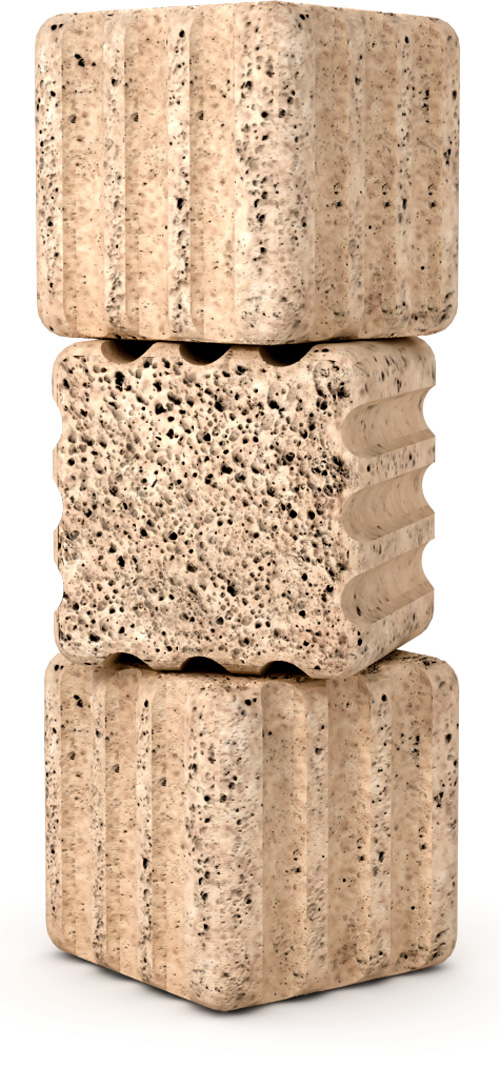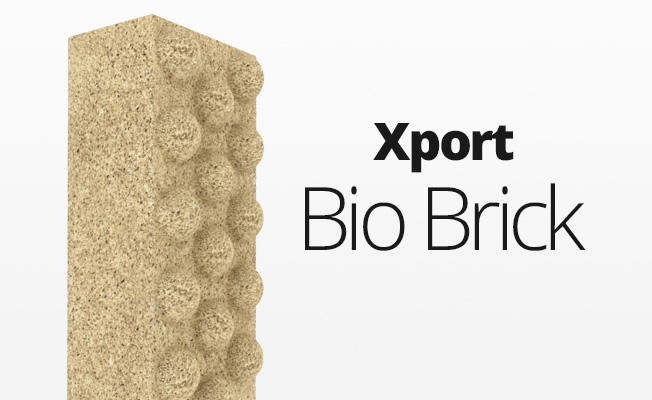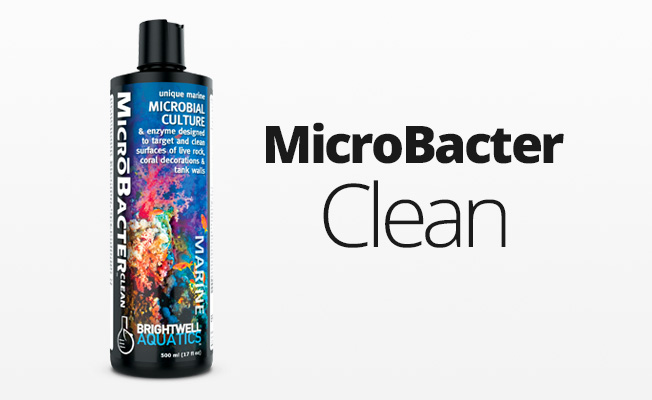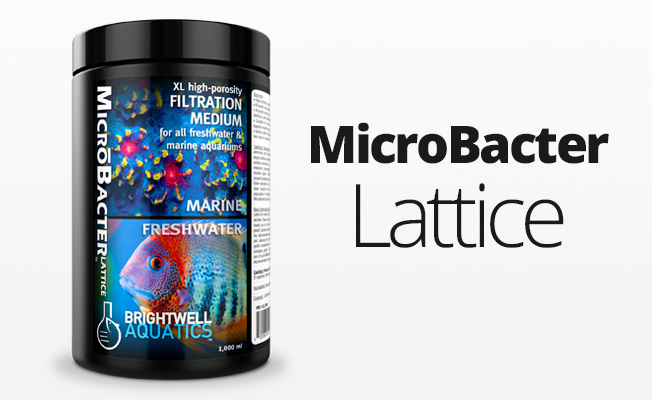
Xport BIO Blocks
Ultra-porous ceramic Block Media for Biological Filtration with Superior Performance Characteristics
Overview
- Designed to be used in marine and hard freshwater aquariums with a pH of 7.5 or over
- Highest porosity and largest useable surface area, per unit weight or volume, of all filtration media available anywhere
- Provides huge amounts of aerobic and anaerobic surface area for efficient bacterial colonization
- Laboratory Tested: Provides over 40,000 square feet (3,716 square meters) of surface area per liter of medium. One 2” block has about 10,000 square feet of useable surface area for bacterial colonization, a 1.5” block has about 4,000 square feet of useable surface area
- When properly colonized, and used as directed, they will reduce toxic ammonia and nitrites to near zero in ponds and all aquariums, marine or fresh
- Also reduces phosphate significantly and dissolved organics
- Works excellently as the only filtration medium for the aquarium or pond or may be employed in addition to other filtration media
- Doped with Aragonite to buffer pH at the bacteria level, preventing acid buildup which eventually would kill the bacteria and reduce capacity. (Which is what happens in competing products)
Sizes
1.5in - 4, 8, 12 pack | 2in - 3, 6, 12 pack
Instructions & Guidelines
Use one 1.5 “ XPort Bio Block for every 20 to 40 U.S. gallons ( 75 to 150 L ) or one 2.0” Xport Bio Block for every 30 to 50 U.S. gallons ( 100 to 200 liters) of system capacity, more for heavy bio loads.
Rinse material well with aquarium water or purified tap water to remove any dust. For superior results, seed the material using only the specific bacteria product that you are using in the aquarium. If using MicrōBacter Start XLM, use one capful to seed (add balance of bacteria directly to the aquarium). If using FlorinBacter7, MicrōBacter7 or MicrōBacterCLEAN add full recommended dose. Place XPort Bio Blocks in a plastic container, filling it with aquarium water, and then adding the bacterial product, based on the size of your aquarium, to that container. Allow to stand overnight and then add the seeded XPort Bio Blocks to your system. Discard the soak water. It is recommended that you use sponge, fine filter floss or other mechanical filtration ahead of XPort Bio Blocks to prevent clogging with organic material. For maximum results, also provide a good carbon source for growing bacteria, such as Brightwell® Katalyst bio pellets or liquid Reef BioFuel or FlorinAxis as appropriate for your aquarium, as directed on their label. For maximum nitrification, place in an area of good flow with good oxygenation.
Important: Do not fluidize or allow to rub against other filtration material which could cause grinding down.
Recommendation: Do not use different bacteria products in an aquarium, particularly during startup! When an aquarium is new, the available nutrients for bacteria to consume are scarce and if the kind of bacteria you introduce requires organics, they will likely not be available and the two different bacterial cultures can fight each other. It is best to start out with MicrōBacter Start and cycle the tank, and then progress to MicrōBacterCLEAN at cycling completion. Then progress to MicrōBacter7 or FlorinBacter7at 4 to 6 months of age. This will provide the cleanest and fastest route to meet your goals and provide a beautiful and sustainable bacterial ecosystem. Particularly do not introduce foreign strains of bacteria such as "live sand", pre-cultured dry man made "live rock," etc. It is ok to use rocks from other aquariums that have already cycled and live rock purchased from stores. All forms of man made or natural live rock (except dry pre-cultured), aragonite and marco rock will work fine. If you introduce the wrong strains of bacteria, at the wrong time, you can slow down the whole process.
Additional Information
You can use more blocks than the capacity shown above, however, we recommend that you do not exceed 5 times the recommended number of blocks. For nitrification, or removal of ammonia and nitrite, employing the blocks aerobically, or above the water line will provide maximum results. To do this, mount the blocks in air, above the water level, and run a small stream of water through the blocks. It is not necessary to run the whole flow of the main system pump through the blocks. A flow of about 40 to 80 liters per hour is ideal. An adjustable flow control will allow you to adjust the water flow to only that which will flow through (and not around) the block. On the other hand, removing nitrate is an anaerobic process and limiting oxygen to the block as much as possible will maximize the nitrate removal. In this case, mount the blocks beneath the water surface in the sump in a very low flow area, if possible.
To use one block for both aerobic nitrification and anaerobic denitrification, mount the block below the water surface and provide medium flow around it. The bacteria growing in the top 1/4" of the surface of the brick will be aerobic and will use up all the oxygen so that the inside of the brick goes anoxic or anaerobic. Anaerobic denitrifying bacteria will then colonize the internal surfaces of the block and you will get both nitrification on the surface and denitrification in the internal parts.
One important criteria in marine systems is gas exchange. Xport is the best bacterial media in the world, but it is not good at gas exchange. Bio balls are the best for gas exchange, so any system will work better with a small stack of bio balls placed in the main flow (in air).


